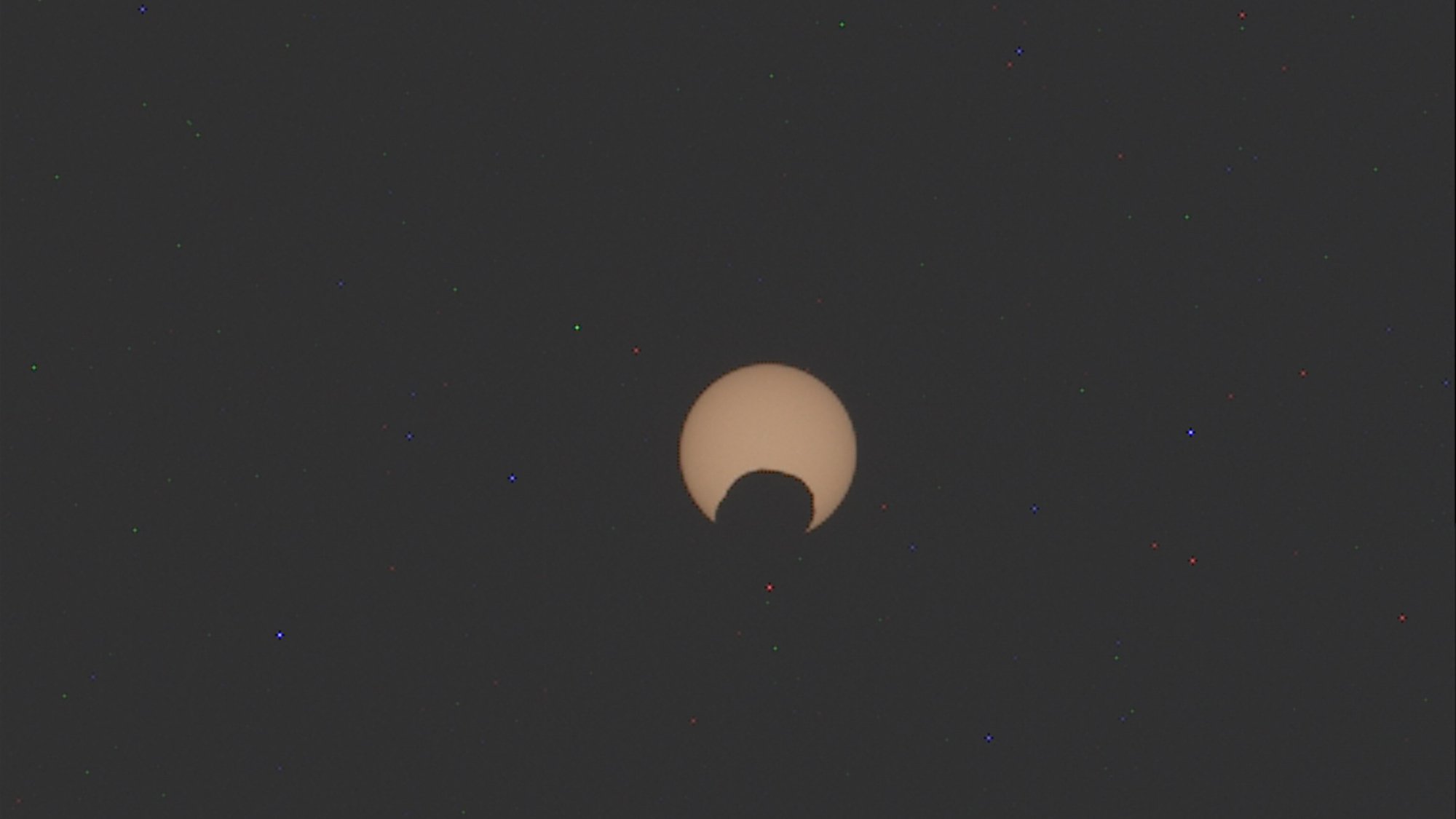
Even Mars rovers like to chase solar eclipses.
On Sept. 30, NASA's Perseverance rover turned its Left Mastcam-Z camera toward the sky and photographed a solar eclipse from Mars, capturing the planet's moon Phobos partially blocking the sun's disk.
In the series of photographs, you can distinctly see the shape of Phobos, which resembles a lumpy potato. Phobos, which is the larger of Mars' two tiny moons, isn't spherical like our own moon — or many moons in our solar system, for that matter — but rather irregular like an asteroid.

Measuring roughly 17 miles by 14 miles by 11 miles (27 by 22 by 18 kilometers), this Phobos orbits Mars at an exceptionally close distance — just 3,700 miles (6,000 km). By comparison, our moon circles at an average distance of 238,855 miles (384,400 km) from Earth. And Phobos is a fast mover, completing three orbits of Mars in a single day.
Related: What is a solar eclipse?
While Phobos might look like an asteroid, it likely isn't one. In fact, the origin of Phobos is one of the moon's biggest mysteries. Some scientists have ruled out Phobos as a captured asteroid for one main reason — its orbit around Mars is nearly perfect. If Mars' gravitational pull had snagged a passing asteroid, the abducted object likely would have an irregular orbit.
Current theories about the origin of Phobos and its companion moon, Deimos, revolve around some form of accretion, whether that's from leftover material as Mars formed or from a cataclysmic collision between the Red Planet and another celestial body.

Perseverance's recent photo series of Phobos isn't the first time the rover has imaged a solar eclipse; it also photographed the oblong moon transiting the sun in April 2022 and February 2024.
And, in fact, Perseverance wasn't even the first rover to image such an event. NASA's twin Spirit and Opportunity rovers observed Phobos solar transits in 2004, while Curiosity recorded the first video of one in 2019. See? Rovers really do love chasing solar eclipses!







